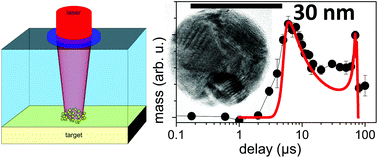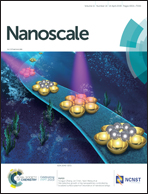Early appearance of crystalline nanoparticles in pulsed laser ablation in liquids dynamics†
Abstract
The size and crystallinity of gold and silver nanoparticles during the process of pulsed laser ablation in water (PLAL) is investigated with microsecond and sub-microsecond time resolution. While basic observations have already been established, such as detection of particles inside the cavitation bubble, trapping of ablated matter by the bubble or the action of size quenching on a sub-millisecond time scale, the structure formation mechanism is still a matter of debate. Quantifying the nanoparticle release and crystallinity close to the irradiated metal target by wide and small angle X-ray scattering reveals the presence of nanoparticles ahead of the developing vapour bubble and inside the bubble. While the (temporal) distribution is in agreement with a homogeneously particle-filled bubble, solid particles are detected at the advancing bubble front. Wide-angle X-ray scattering confirms the crystalline nature of these large particles. This reveals that for picosecond ablation the expulsion of condensed phases of material during the ablation process adds significantly to the bimodal size distribution, relating to recent models of film lift-off and liquid metal Rayleigh instabilities.



 Please wait while we load your content...
Please wait while we load your content...